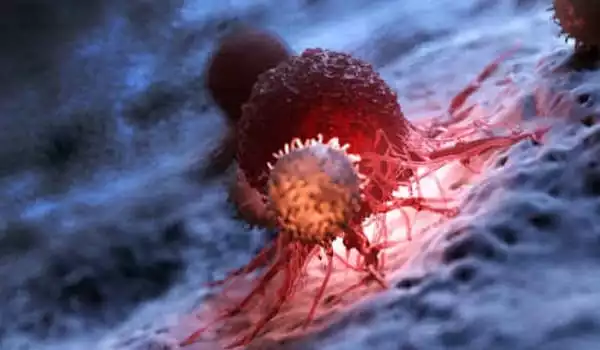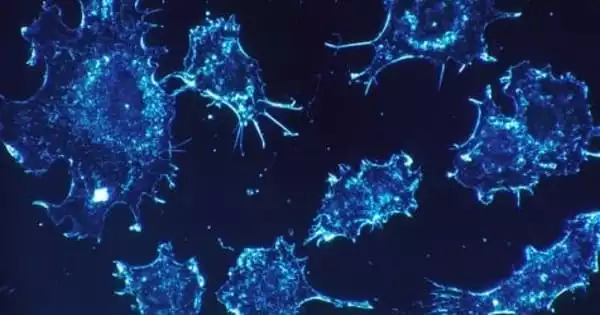Researchers created a microbial encapsulation technique for therapeutic bacteria that can conceal them from immune systems, allowing them to access tumors more effectively and destroy cancer cells in mice.
Columbia Engineering researchers announce the development of a “cloaking” method that temporarily conceals therapeutic microorganisms from immune systems, allowing them to transport medications to tumors and destroy cancer cells more efficiently in mice. They built gene circuits that govern the bacteria surface by modifying the germs’ DNA, resulting in the formation of a molecular “cloak” that envelopes the bacteria.
“What’s very intriguing about this work is that we can manage the system dynamically,” said Tal Danino, associate professor of biomedical engineering and co-leader of the project with Kam Leong, Samuel H. Sheng Professor of Biomedical Engineering. “We can control how long germs live in human blood and increase the maximum tolerated amount of bacteria. We also demonstrated that our method enables a new bacteria delivery strategy in which we may inject bacteria into a single accessible tumor and controllably migrate them to distal tumors such as metastases, cancer cells that spread to other parts of the body.”
The researchers focused on capsular polysaccharides (CAP), sugar polymers that coat bacterial surfaces, for their work, which was published today in Nature Biotechnology. Many bacteria in nature use CAP to protect themselves from threats, including immune systems. “We hijacked the CAP system of a probiotic E. coli strain Nissle 1917,” explained Tetsuhiro Harimoto, a PhD student in Danino’s lab and co-lead author of the work. “With CAP, these bacteria can resist immune attack for a short time; without CAP, they lose their encapsulation protection and are cleaned out of the body. So we decided to make an effective on/off switch.”
We can control how long germs live in human blood and increase the maximum tolerated amount of bacteria. We also demonstrated that our method enables a new bacteria delivery strategy in which we may inject bacteria into a single accessible tumor and controllably migrate them to distal tumors such as metastases, cancer cells that spread to other parts of the body.
Tal Danino
An Effective On/Off Switch
To do this, the researchers created a novel CAP system known as inducible CAP, or iCAP. They command the iCAP system by providing it with an external stimulus, a tiny chemical known as IPTG, which allows for programmable and dynamic changes to the E. coli cell surface. Because iCAP modifies bacterial interactions with immune systems (such as blood clearance and phagocytosis) in a controlled manner, the researchers discovered that they could control the duration bacteria can live in human blood by varying the amount of IPTG given to the iCAP E. coli.
Using Bacteria For Therapy
While employing bacteria for therapy offers a novel, alternative method to treating a wide range of cancers, there are a number of obstacles to overcome, most notably their toxicity. These microorganisms, unlike many traditional medications, are living and can thrive throughout the body. They are also recognized as alien and hazardous by the body’s immune systems, resulting in either a high inflammatory response (too many bacteria means high toxicity owing to over-inflammation) or rapid bacteria removal (too little bacteria means little therapeutic efficacy).
The project was co-led by Jaeseung Hahn, a postdoctoral research scientist in Danino and Leong’s labs “These toxicities have been demonstrated in clinical studies to be the major issue, limiting the number of bacteria that can be dosed and affecting efficacy. Due of significant toxicity, some trials had to be halted.”

The Ideal Bacteria
The ideal bacterium should be able to avoid detection by the immune system upon entry into the body and quickly reach the tumor. And, once inside the tumor, they must be removed in other parts of the body to reduce toxicity. The researchers used mouse tumor models to show that by using iCAP, they could boost the maximum acceptable dose of bacteria by tenfold. They encapsulated the E. coli strain in order for it to avoid detection by the immune system and reach the tumor. Because they did not provide IPTG in the body, the E. coli iCAP lost its encapsulation over time and became more easily removed in other areas of the body, reducing toxicity.
To assess efficacy, the researchers altered E. coli iCAP to create an anticancer toxin and found that it reduced tumor growth in colorectal and breast cancer animal models more than the control group without the iCAP system.
The researchers also proved that bacterial migration throughout the body may be controlled. Previous research has revealed that as tumors grow, modest amounts of germs seep out. The Columbia researchers employed iCAP to demonstrate that they can control bacterial leaking from tumors as well as their translocation to other cancers in this new study. They injected E. coli iCAP into one tumor, fed the mice IPTG-laced water, activated iCAP within a tumor, and observed E. coli iCAP leak out and migrate to uninjected tumors.
Next Steps
The group is looking into a variety of research topics. There are about 80 different forms of CAP for E. coli alone, and even more for other bacteria species that may be produced using similar methods. Furthermore, CAP is not the only molecule found on the surface of bacteria, and additional surface molecules could be controlled in a similar manner. Furthermore, while in this case, iCAP is regulated by an externally supplied IPTG, alternative control systems such as biosensors might be utilized to autonomously control the surface properties of therapeutic bacteria.
The team, which is also linked with Columbia’s Herbert Irving Comprehensive Cancer Center and Data Science Institute, mentions clinical translation as the next key difficulty they would like to address. “While there is a lot of laboratory research showing different approaches to manipulate microorganisms, applying these strong medicines to a complicated animal or human body is extremely difficult. We demonstrated proof of concept in mouse models, but considering that people are 250 times more sensitive to bacterial endotoxins than mice, we anticipate that our findings will have a greater impact on human patients than on mice” Harimoto stated.
Leong continued, “Bacterial cancer therapy has distinct advantages over conventional medication therapy, such as effective tumor tissue targeting and programmable drug release. Its full potential has been hampered by the possibility of toxicity. This study’s cloaking method may address this key issue.”





